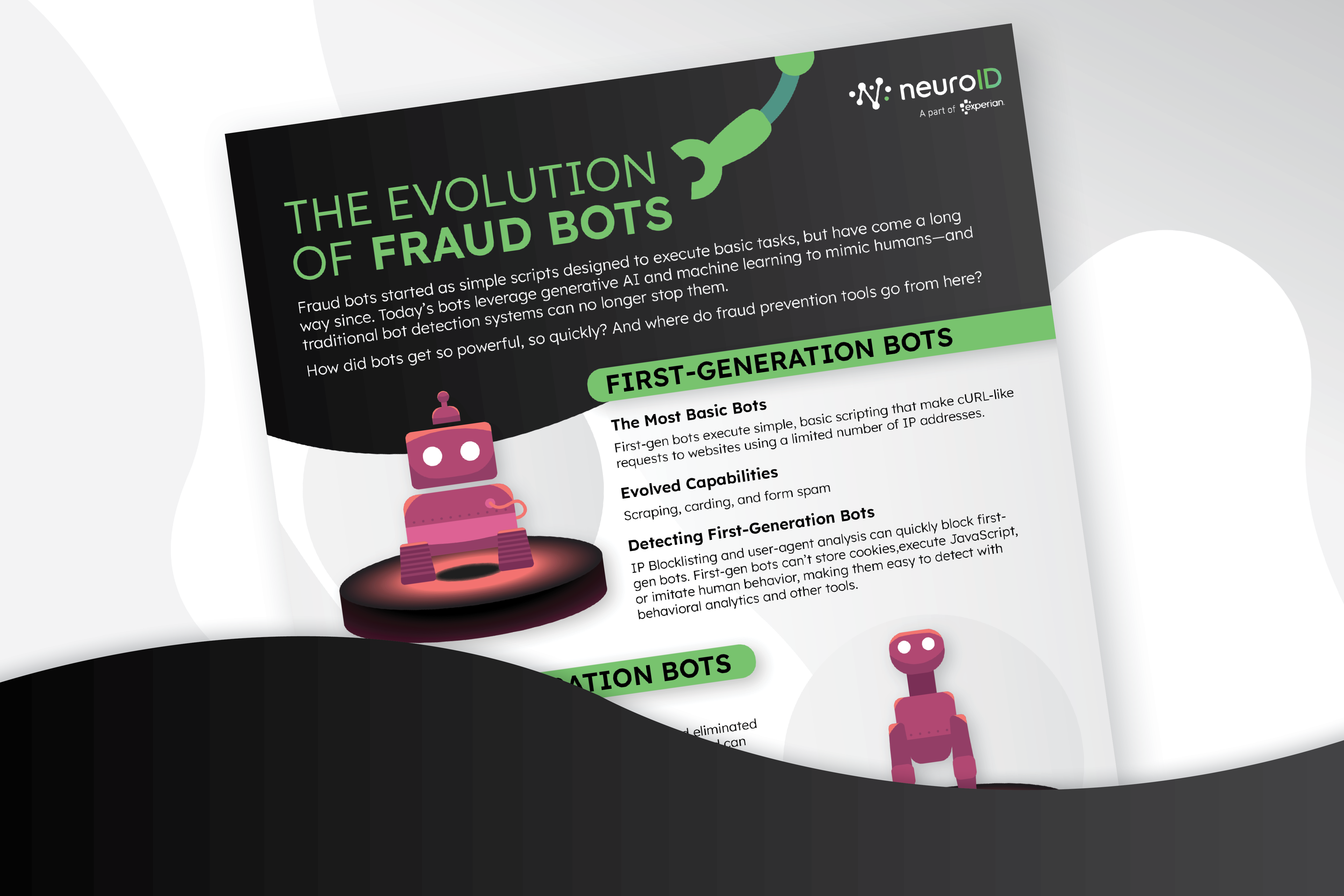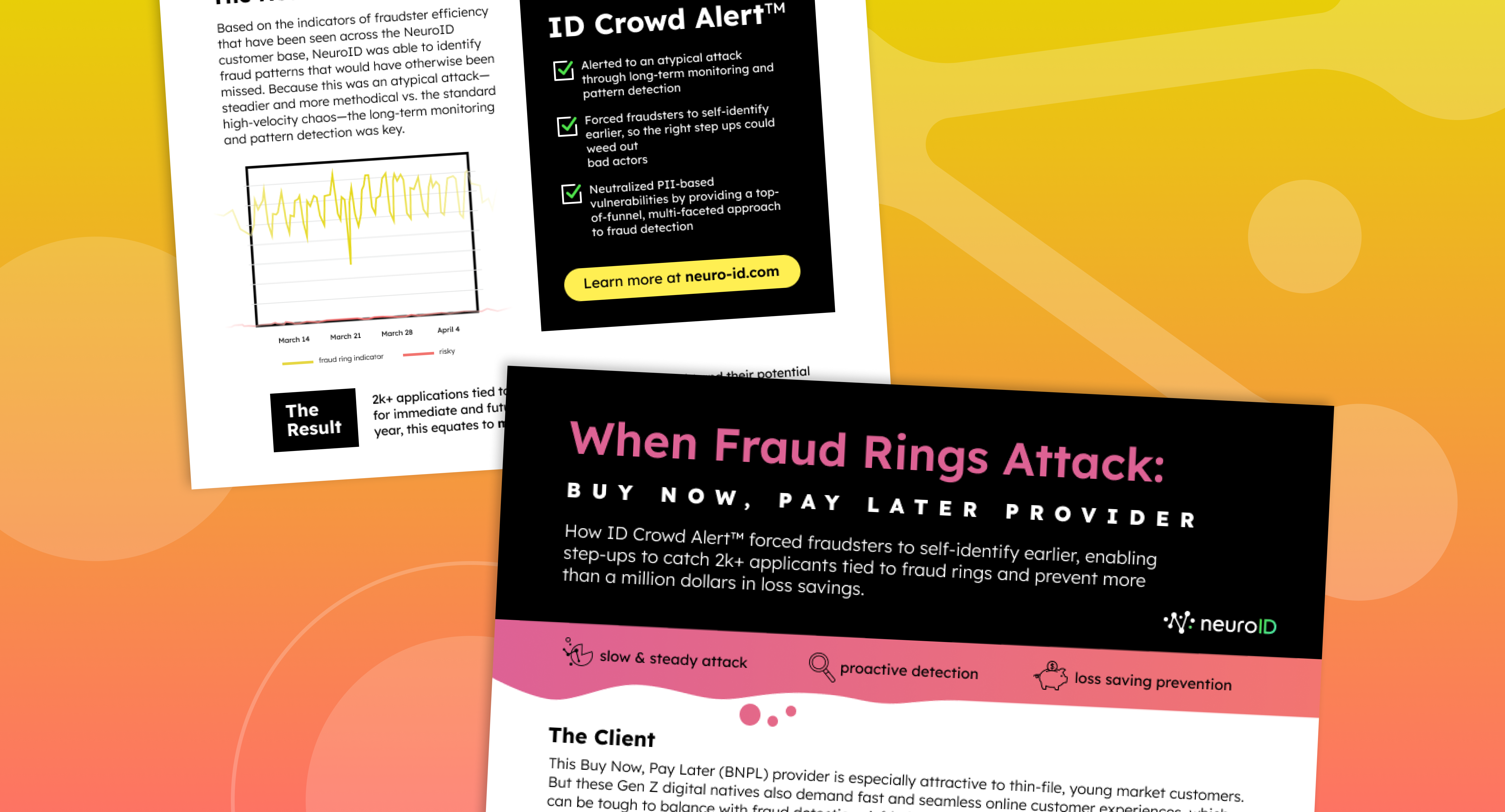
3 Reasons Why Fall is the Ideal Time to Trial New Fraud Tech
This fall, as nature prepares to turn over a new leaf, fraud teams should be doing the same. I work with future clients to run trials year round, but fall has a special place in my heart for proving value. Here’s my top three reasons why right now is the perfect time to trial new fraud technologies—NeuroID or otherwise—and ensure your defenses are ready for the onslaught of the new fraud styles expected with the holiday season.
1. Autumn’s Amazing Average
Fall typically offers an ideal balanced environment for trialing new fraud solutions. Unlike the winter and spring, which are marked by dramatic spikes in fraud attacks, the fall provides a steady but moderate level of activity.
Summer usually brings an attack slump, with both June and July strikingly below the baseline of attack numbers across all measurable metrics. But fall starts to ramp up again. That is to be expected, as back-to-school shopping and holiday season previews attract fraudsters. September, for instance, marks a significant increase in fraud attempts compared to the prior months, with a 25% rise in attacks above the summer lows. This slower ramp up gives you a unique opportunity to test and refine fraud prevention strategies. By October, fraud activity is back to baseline: a perfect mid-level between the summer slump and winter wave.
This makes it an ideal time to test new systems and vendors. Trials for new technology during the extreme highs of winter or the low-volume summer months can lead to unreliable results. Fall’s steady baseline of fraud attacks provides a more accurate and consistent testing ground.
2. Like Leaves on a Tree, Fall Brings Diverse Fraud Colors
In the fall, the types of attacks are typically diverse enough to capture holistic results. This diversity enables fraud teams to test new tools against a range of attack vectors without risking the crushing volume that can occur during peak seasons. For example, September and October often see a mix of fraud ring activity, bots from various generations, probing attacks: a complex tapestry of attack styles that provide teams with a well-rounded assessment of how new technologies perform under different scenarios.
Here’s a real-life example: A Buy Now, Pay Later (BNPL) started their trial last October during this steadier period of fraud. The company had been struggling with the defaults on their BNPL product and couldn’t determine accurately whether this was 1st-party default or 3rd-party fraud. Upon deploying NeuroID’s trial, it became evident immediately that fraud rings had targeted their BNPL product using stolen and synthetic credentials, purchasing large amounts of goods. NeuroID was able to show that 20% of what they thought was 1st-party credit risk, was actually 3rd-party fraud. The BNPL began live decisioning in production on the NeuroID signals BEFORE the planned trial end date, immediately improving their losses and adding new levels of insights to make better decisions on how to adjust controls around different types of fraud, and spot what was really happening.
3. Perfect Prep for the Holiday Surge
The period between Thanksgiving and the New Year is notoriously fraught with fraud attempts, as cybercriminals take advantage of the surge in online shopping and relaxed fraud controls leaning into ease of customer onboarding. Testing and fine-tuning new fraud technologies in the fall ensures that your systems are robust and ready to handle the holiday blitz (NeuroID provides value from day-one with a simple Javascript implementation—so you can be sure that if you trial in the fall, it’s ready for holiday season).
If your fraud prevention systems are not up to par with evolving attack methodologies, you don’t want to worry about catching up in the busiest season of the year. Testing and deploying new technology in this 6-ish weeks of pre-surge attacks allows you to identify and address vulnerabilities before they can be exploited during the high-risk holiday season.
Here’s a real-life example: A top-tier bank was struggling with an overwhelming amount of fraud volume. In early fall, we deployed our Account Opening solution, with the bank’s fraud team sending NeuroID identified risky users down a decline path. In the deployment, the attacks were identified as a mix of human and bot—and within hours, the fraudsters realized they were no longer getting through the bank’s defenses. Volume dropped drastically as they abandoned attacking this bank (likely moving on to easier targets).
Coming into the heavy-fraud season, the bank was able to get ahead by using NeuroID to significantly reduce their manual reviews, fraud losses, and operating expenses by no longer spending time and money on so many bad applications.
Best Practices for Fall Fraud Tech Trials
Bears start eating more for hibernation, squirrels bury more nuts, birds fly south: nature uses fall to prepare for winter, and so should fraud teams. By leveraging the baseline, yet diverse, fraud activity that characterizes the autumn months, you get the most from trials in a controlled environment. Then by the time the holiday season arrives, your fraud prevention systems are battle-tested and ready to protect your business from the inevitable surge in fraud.
A few more best practices to keep in mind when starting out a fall trial. Use this time to:
- Refine Escalation Systems: Fall is the perfect time to refine your escalation protocols. With a more manageable volume of fraud activity, you can experiment with different thresholds and response strategies, ensuring they are optimized for both low- and high-risk periods.
- Focus on Solutions That Add to Your Insights, Not to the Noise: As fraudsters increasingly find ways to circumvent traditional, PII-reliant fraud stacks, fall is an excellent time to explore non-PII solutions that can catch the unseen fraud that slips through the cracks. Behavioral analytics is a prime example, as we can provide early warnings of increased activity that may not be caught by other controls.
- Prepare for Scaling: Ensure that any technology you trial in the fall can be scaled up quickly and effectively to meet the demands of the holiday season. This might mean paying close attention to how a tool works with real-time restraints, integrates with your existing systems, and what it might mean for changes to step-ups and insights from the team. For example, after implementing NeuroID, Latin American financial services company Addi was able to reduce their verification time by 50% for good users—something that might come in handy when hitting the high-revenue holiday months.
Ready to use the fall to fortify your defenses? Give us a shout for a personalized demo.




